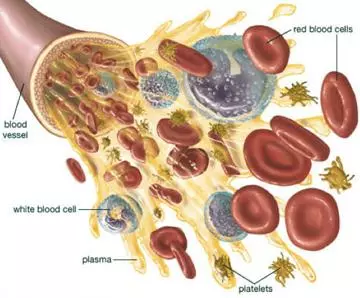In 1966, Hungarian physician Endre Mester first published an experiment in which he observed accelerated hair growth in rats treated with laser therapy, making alopecia the first legitimate therapeutic indication for laser therapy.
Encouraging patient cases and evidence from clinical trials have helped LLLT (low-level laser treatment) gain more acceptance in treating hair loss. In June of 2017, the Dermatologic Surgery Journal published a new double blinded study using the Capillus low-level laser cap with clinical results showing a very promising treatment outlook.
LLLT Background
Used since the 1960s to treat medical conditions like alopecia, chronic ulcers, as well as headaches, musculoskeletal, and neuropathic states of chronic pain, LLLT involves exposing cells or tissue to low levels of red and near infrared (NIR) light without major adverse side effects. It is referred to as “low level” because of the use of light at energy frequencies that are low compared to other forms of laser therapy that are used for ablation, cutting, and thermally coagulating tissue. LLLT is also known as “cold laser” therapy because the power frequencies used are lower than those required to generate heating of the tissue.
Although the skin is the organ that is naturally exposed to light more than any other organ, it still responds well to red and near-infrared wavelengths. The photons are absorbed by mitochondrial chromophores in skin cells. Consequently, electron transport, adenosine triphosphate (ATP) nitric oxide release, blood flow, reactive oxygen species increase and diverse signaling pathways get activated. This use of low levels of visible or near-infrared (NIR) light for reducing pain, inflammation, and edema, promoting healing of wounds, deeper tissues, and nerves, and preventing tissue damage has been known for almost forty years since the invention of lasers.
LLLT for Hair Loss
Recently, hair restoration has been a leading field in the application of LLLT technologies. In January of 2007, the FDA granted the first clearance for a device indicated for use in treating males with Androgenetic Alopecia. Next, in 2010, the FDA expanded the category to treat females who were diagnosed with androgenetic alopecia or genetic hair loss.
The theory widely accepted is that LLLT, particularly at wavelengths in the red wavelength range, affects the functioning of the stem cells that cause hair growth. The photobiomodulation (another name for light therapy using lasers or LEDs to improve tissue repair, reduce pain and inflammation wherever the beam is applied) activates cytochrome C oxidase and increases mitochondrial activation which leads to an increase in the energy for cell activity (ATP). Subsequently, this causes hair follicles in the dormant telogen growth stage to reverse into the active growth or anagen phase.
Capillus Clinical Study
A double blinded clinical study was developed by a neutral third party to evaluate the safety and physiologic effects that occur when the human hair and surrounding tissue structures are exposed to laser light from the Capillus laser cap fitted with diode sources operating at 650nm wavelengths. (In cold lasers, the idea of 'wavelengths' is a significant operating measurement since the wavelengths used in all therapy lasers interact with tissue uniquely.)
The study consisted of 44 healthy female volunteers, aged 18-60 years, and who on a Ludwig Baldness scale, fit into a I or II hair loss pattern.
The patients were randomly assigned to the treated or placebo study groups. Neither the patients, treating physicians, photographic consultants nor the investigator performing hair counts was aware whether the Capillus labeled device was “active” operating at 650nm wavelengths or a “sham device” emitting a lower wavelength of light. Each subject used a "Capillus cap" for 30 minutes every other day for 17 weeks or 60 treatments, utilizing the device on a self-treatment home-use basis.
Results were impressive and showed a 51% significant increase in terminal hair counts (thick, strong, pigmented hairs) in the laser group as compared to the placebo treatment group. (Again, this study only included females rated on a Ludwig scale as a I or II.) Furthermore, there were no side effects or adverse events reported by any of the participants at any time during the conduct of the study.
What do we know from this study?
- We know the device is safe for the unsupervised environment of home use.
- Why is this important? The device can be used on an every other day basis conveniently at home. This is an important factor when choosing a treatment that will likely require months of use.
- We know that this wavelength of 650nm is effective in increasing the terminal hair counts (by 51%) in females with a Ludwig I or II alopecia.
- Why is this important? We know that this wavelength works in a significant way, but we do not know whether there are other wavelengths that have equally or increased effectiveness.
- We know this study only looked at females.
- Why is this important? Currently, no industry standards are advising that men use a separate laser cap treatment regimen (i.e. using the cap every other day for 30 min) than women.
- Even though patterns of hair loss are different based on sex, there is no scientific article suggesting the physical act of hair growth is different for men versus for women. The process of hair growth is the same for both genders.
- We know the Capillus cap is only for men and women above the age of 18, and is NOT recommended for pregnant women or children.
- We know there are other medical treatments effective for hair growth in men and women.
- Why is this important? This study reinforces the positive impact that the Capillus laser cap can have on restoring and increasing the terminal hair count.
- When the Capillus laser cap is combined with other types of medical hair restoration, we have synergism in achieving more terminal hair counts.
At HT&RC, Dr. Gray is a certified provider of the Capillus laser cap, which allows him to both diagnose the cause of hair loss and guide you through treatment with a Capillus laser cap or any other type of therapy. If you have questions about laser therapy or are wondering if it's the best fit for you, contact HT&RC today to schedule a consultation with Dr. Gray to learn more.






